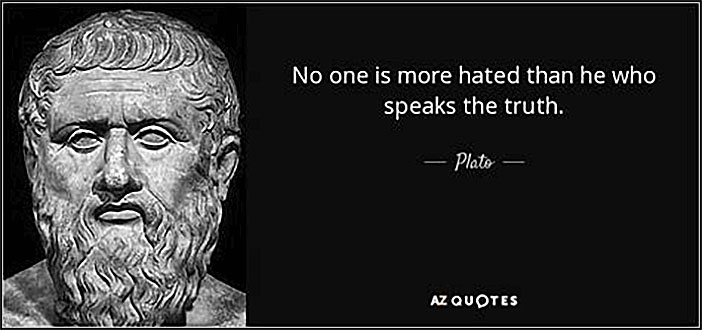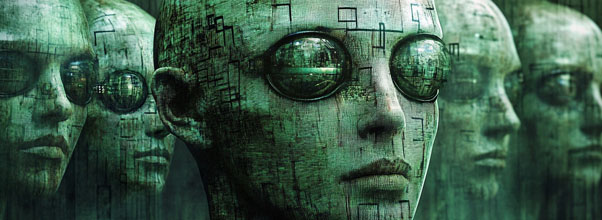The recent release of Oblivion Remastered has reignited the controversy around the replacement of traditional sex designations with the modern “Body Type” system. The original Oblivion (2006) featured male and female character options in line with its medieval high fantasy setting. However, the remastered version quietly adopted the Body Type system, much to the dismay of longtime fans.
To make matters worse, Nexus Mods — a major modding platform long accused of ideological bias — has already banned a mod that restored the original male and female labels to the character creation screen in Oblivion Remastered. The mod was previously available at https://www.nexusmods.com/oblivionremastered/mods/84, but it has since been removed without explanation (archive link via X).
Race is Now “Identity”
To make matters worse, Bethesda appears to have taken the trend even further. In Oblivion Remastered, they have reportedly removed the word “Race” — a staple of RPG character creation for decades — and replaced it with the term “Identity.”

This is the first known instance of a fantasy RPG studio making this change, and it underscores just how far removed these revisions are from the traditions of the genre. This isn’t localization — it’s ideological reengineering. in which traditional fantasy tropes are being overwritten by the language and priorities of gender ideology — even in legacy titles that were never designed with such frameworks in mind.
This is not an isolated incident. It’s part of a growing pattern in which traditional fantasy tropes are being overwritten by the language and priorities of gender ideology — even in legacy titles that were never designed with such frameworks in mind.
The First Domino: The Sims 4 (2016)
While not a fantasy RPG, The Sims 4 was a mainstream testing ground for gender customization. In 2016, EA and Maxis removed restrictions based on gender, allowing players to select any voice, walk style, and clothing regardless of sex. They also allowed “physical frame” choices instead of listing “male” or “female.”

GLAAD praised the move. The gaming press hailed it as a progressive milestone. And while players were given more options, the terminology began to shift. It was subtle at first, but it laid the groundwork.
Cyberpunk 2077 (2020)
CD Projekt Red, following backlash over past gender-related jokes, removed binary gender choices. Players could choose a body, voice, and genitals — but not a “sex.” While this approach still allowed robust customization, it marked another clear step away from biological sex toward a constructivist view of identity.
The Shift to Fantasy: World of Warcraft: Dragonflight (2022)
The breaking point for many traditional RPG players came when World of Warcraft quietly renamed “male” and “female” options to “Body Type 1” and “Body Type 2.” It wasn’t announced with fanfare — it simply appeared one day.
This change marked a significant breach of immersion for many longtime players. Introducing modern gender theory terminology into a fantasy setting rooted in myth, archetype, and medieval motifs disrupted the suspension of disbelief. Rather than enhancing the game world, it reminded players of real-world politics — breaking the spell that fantasy is meant to cast.
Blizzard deleted forum posts discussing it, which only fueled more skepticism and backlash. Why would a fantasy MMORPG rooted in archetypal heroism, mythology, and medieval aesthetics make such a change? And why without warning or discussion?
It Was Never Organic
There’s little evidence that gamers demanded this shift. Instead, we see a top-down pattern:
- Academic gender theory promotes the deconstruction of sex and gender.
- NGOs like GLAAD release annual reports lobbying for more LGBTQ+ representation.
- HR departments in AAA studios, often staffed with DEI hires, push for “inclusivity” benchmarks.
- Gaming journalists, ideologically aligned, reinforce these changes as moral progress.
The result? Coordinated pressure — not player feedback.
The Rise of DEI Officers and Their Influence on Game Content
It’s important to recognize that this pressure has institutionalized roots. It’s not just DEI-influenced HR departments — full-time DEI officers are now embedded within many major studios, and until the Trump re-election campaign and the broader cultural pushback, these roles were among the fastest growing in the tech and entertainment sectors (HR Brew).
These officers didn’t just advocate for workplace diversity — they mandated the insertion of DEI into the actual content of games. Studios like Activision Blizzard openly state that DEI principles are integrated into their game development pipelines and content review processes (Activision Blizzard Newsroom).
In other words, it’s not optional — it’s policy. And that policy originates from departments and individuals who are often ideologically aligned with activist NGOs and academic theory, not with traditional game design values or player expectations.
GLAAD’s Role in Engineering the Industry
One of the most influential forces behind the body type trend and broader LGBTQ+ representation in video games is GLAAD. Far from being a passive observer, GLAAD actively incentivizes studios to comply with its ideological expectations through its GLAAD Media Awards, public praise campaigns, and industry rankings.
In 2024 and again in 2025, GLAAD celebrated nominees like World of Warcraft: Dragonflight for their implementation of “inclusive character creation options” — a euphemism for the removal of traditional sex labels. Blizzard VP Holly Longdale even boasted about the studio’s nomination, showcasing how such awards are used as ideological currency within the industry. (GLAAD Awards 2025)
These awards are not just honorary — they serve as a signal to developers: adopt the agenda, and gain prestige. Resist it, and risk being labeled regressive. The result is predictable: conformity.
This system bypasses gamers entirely. No vote, no poll, no opt-in. Just pressure, reward, and compliance.
Verisimilitude: The Forgotten Pillar of Fantasy
Fantasy, for all its dragons and spells, still operates under rules — and the most important of these is verisimilitude. That doesn’t mean realism in the modern sense, but rather internal believability. A world can have magic and talking trees — as long as it makes sense within itself.
Tolkien called this “the inner consistency of reality.” If a fantasy world violates that, it collapses under its own contradictions.
The introduction of “Body Type 1” and “Body Type 2” into a world that otherwise draws from medieval archetypes, mythic structures, and grounded physical roles destroys verisimilitude. These terms do not emerge from the logic of the world — they are smuggled in from 21st-century identity politics.
Just as a cyberpunk hacker doesn’t belong in a Viking saga, modern gender ideology doesn’t belong in a world where kings ride griffins and dwarves craft enchanted axes. It’s not about intolerance — it’s about consistency.
By forcing this foreign framework into a mythic narrative, developers are not only alienating players — they’re shattering the illusion that makes the fantasy world immersive in the first place.
Why Fantasy Worlds Suffer
Fantasy RPGs operate under metaphysical rules. Tolkien’s legendarium, for instance, draws clear distinctions between male and female — not as social constructs, but as realities rooted in the nature of creation. Elves, men, dwarves, and orcs all reflect a duality grounded in myth.
Replacing “sex” with “body type” is not just a UI change. It is a metaphysical assault on the internal coherence of the world. It forces modern identity theory into a pre-modern narrative space, violating immersion and the suspension of disbelief.

Worse still, it breaks the fourth wall — a concept from theatre and film that refers to the invisible barrier separating the fictional world from the audience. When players encounter language like “Body Type 1” in a setting modeled after medieval myth, it shocks them back into the real world. It reminds them that this game isn’t just fantasy — it has been tampered with by real-world politics. The illusion collapses.
Fantasy should offer an escape, not an ideological confrontation.. Tolkien’s legendarium, for instance, draws clear distinctions between male and female — not as social constructs, but as realities rooted in the nature of creation. Elves, men, dwarves, and orcs all reflect a duality grounded in myth.
Replacing “sex” with “body type” is not just a UI change. It is a metaphysical assault on the internal coherence of the world. It forces modern identity theory into a pre-modern narrative space, violating immersion and the suspension of disbelief.
Conclusion
This was not an evolution. It was an imposition. The body type system is a solution to a problem that didn’t exist — a product of activist collusion, not creative necessity. And in the process, it undermines the fantasy worlds we once escaped into.
Game studios have the right — and the responsibility — to preserve the internal logic of their worlds. Let contemporary ideology wage its battles elsewhere. Leave fantasy alone.
More importantly, game designers who implement these changes have not fully thought through the implications. In their rush to appease a small activist class, they are declaring war on reality itself — recklessly overriding one of the few entertainment spaces where people seek coherence, heroism, and meaning. This is not just careless. It is irresponsible.
It’s time for gamers, modders, developers, and critics to speak out. If we want to preserve the immersive power of fantasy worlds — and the integrity of game design itself — we must challenge this ideological imposition. Push back. Demand transparency. Defend verisimilitude. And above all, insist that fantasy remain free from the creeping reach of real-world politics.
—Wolfshead






Definitely need a big time influencer to write about and make a video about this because yeah these are also good points.
But, additionally, this smuggled terminology is coming to strip away history.
I just saw screenshots and videos. 54,99 for Oblivion Remastered and then you get Furry-looking Khajiit and laughably bad Argonian designs. And this on top.
No, nobody should give them a cent for this. I mean you can already see the Furry I just mentioned on the very Steam page of the game.
I have little hope for future Bethesda games. They TOTALLY lost track and also fail to exploit golden opportunities like the success of the Fallout show.
They still have success asking gamers for a lot of money for a remaster that seems crash prone and they really didn’t bother working too hard on anything but the graphics. The UI of the game didn’t age well, but then let’s hope they would at get least get the graphics right.
Well, they succeeded for the most part, and then injected a lot of woke bull on top. No, thank you.
Gamers still pay for this slop. And this really has to stop. They cannot create anymore, they regurgitate and destroy old fan favorites. It’s terrible.
I like a lot of fantastic old games, I do not want to pay another time for them in 10-20 years, this is getting ridiculous and is an unfortunate testament of the lame decade and culture we are stuck in right now!